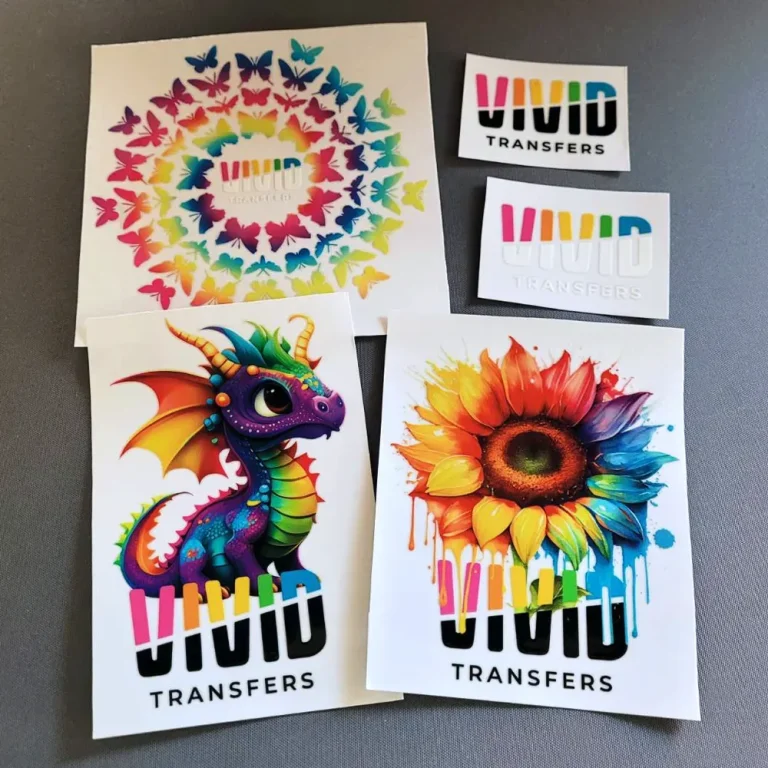In recent years, **UV DTF (Direct to Film) transfers** have emerged as a groundbreaking technology within the printing industry, setting a new standard for sustainability. This eco-friendly option utilizes ultraviolet curing technology, which not only enhances print quality but also significantly reduces waste associated with traditional printing methods. As businesses strive for sustainability, the environmental impact of UV DTF transfers is becoming a vital consideration, given its ability to mitigate harmful emissions and promote greener alternatives. Furthermore, UV DTF transfers exemplify the move towards sustainable printing methods, highlighting a commitment to both quality and environmental stewardship. By choosing these cutting-edge eco-friendly transfer techniques, companies can align with the growing demand for responsible practices in the printing landscape.
Exploring innovative alternative methods, **UV DTF transfers**, also known as ultraviolet direct to film applications, signify a pivotal shift towards more sustainable approaches in printing. By harnessing the power of UV curing technology, this printing method offers a cleaner and more efficient solution compared to traditional processes, which often rely on solvents and inks laden with volatile organic compounds. As the industry adapts to consumer demands for eco-friendly solutions, the embrace of these progressive techniques fosters not only a reduction in harmful waste but also supports printing industry sustainability. These technologies underscore the commitment to enhancing environmental responsibility while meeting the creative needs of various sectors. In essence, UV DTF transfers represent an evolution within the printing domain, prioritizing both innovation and eco-consciousness.
The Environmental Advantages of UV DTF Transfers
The adoption of UV DTF (Direct to Film) transfers reflects a significant advancement in sustainable printing methods. One of the primary environmental advantages of UV DTF transfers is their ability to reduce harmful emissions. Unlike traditional printing processes that often rely on solvent-based inks, which can release volatile organic compounds (VOCs) into the atmosphere, UV DTF technology employs eco-friendly inks that are often free from these harmful chemicals. This shift not only protects the environment but also improves the health and safety of workers in compliant printing facilities.
Moreover, the UV curing process that UV DTF transfers utilize contributes to a quicker and more efficient printing solution. The rapid curing means that less ink is wasted, reducing the overall environmental impact by minimizing pre-consumer waste. As companies transition towards more responsible practices, embracing UV DTF printing can significantly contribute to the sustainability goals of the printing industry, aligning with the global movement towards eco-conscious production.
Frequently Asked Questions
What are UV DTF transfers, and how do they contribute to sustainable printing methods?
UV DTF (Direct to Film) transfers harness UV light to cure inks, creating vibrant prints with significantly reduced environmental impact. This process eliminates the need for solvent-based inks, leading to a more sustainable printing method that minimizes waste and promotes eco-friendly practices.
How do UV DTF transfers reduce their environmental impact compared to traditional printing methods?
UV DTF transfers reduce environmental impact by curing inks quickly, which minimizes waste from unused materials. The use of eco-friendly inks without volatile organic compounds (VOCs) also reduces harmful emissions, making UV DTF a cleaner alternative to traditional printing methods.
What are the benefits of using UV curing technology in UV DTF transfers?
UV curing technology in UV DTF transfers offers several benefits including rapid drying times, reduced energy consumption, and high-quality prints. This efficiency leads to lower carbon footprints for printing businesses, aligning with sustainability goals in the printing industry.
Are UV DTF transfers an eco-friendly transfer technique?
Yes, UV DTF transfers are considered eco-friendly transfer techniques as they utilize inks that are free from toxic chemicals. The technology also supports energy efficiency and the recyclability of materials, contributing positively to the environment.
What role do UV DTF transfers play in the printing industry’s sustainability strategies?
UV DTF transfers play a pivotal role in the printing industry’s sustainability strategies by reducing waste, utilizing safe inks, and improving energy efficiency. Companies are increasingly adopting UV DTF technology to meet the growing demand for environmentally conscious printing solutions.
Can UV DTF transfers lead to a better ecological footprint for businesses?
Absolutely! By implementing UV DTF transfers, businesses can significantly improve their ecological footprint. The combination of reduced waste generation, energy efficiency, and non-toxic inks makes UV DTF an effective option for companies aiming to enhance their sustainability credentials.
| Key Point | Description |
|---|---|
| Reduced Waste | UV DTF transfers produce less pre-consumer waste due to the quick curing of inks. |
| Eco-friendly Inks | Uses inks without volatile organic compounds (VOCs) and toxic chemicals. |
| Energy Efficiency | UV curing systems consume significantly less energy than traditional drying methods. |
| Recyclability of Materials | Innovations in inks and substrates are aimed at recyclability and biodegradability. |
| Industry Adoption | There is an increasing trend in adopting UV DTF technology as part of sustainability strategies. |
Summary
UV DTF transfers represent a transformative step in sustainable printing technology, characterized by reduced waste, eco-friendly inks, and energy efficiency. By utilizing ultraviolet light for ink curing, these transfers not only ensure high-quality prints but also significantly lower the environmental impact typical of conventional methods. As the market shifts towards greener practices, UV DTF technology stands out as an innovative solution capable of meeting both consumer demands and ecological needs. The growing adoption across industries signifies a promising future for sustainable printing solutions, positioning UV DTF transfers at the forefront of environmentally-conscious manufacturing.

